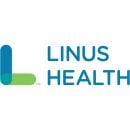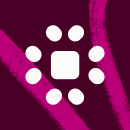As they have for the past 48 New Year’s Eves, the crimson bricks of Copley Square will be graced with the bustle of Bostonian feet, the pristine droplets of freshly melting ice sculptures and perhaps a flourish of midnight snow.
Since 1975, Bean Town has christened the New Year with its famous First Night celebration, a pageantry-filled nod to the city’s rich history. In particular, Bostonians celebrate the burgeoning year with themed ice sculptures — “The 250th Anniversary of the Boston Tea Party” for 2023 — along with local performing artists and fireworks over a chilled Boston Harbor.
But seaside pyrotechnics aren’t the only thing lighting up the Boston horizon: Local tech leaders are ramping up for another illustrious year for their product teams. Nexthink is ramping to scale its comprehensive end-user experience management platform, while Robin continues to reimagine the modern workplace in an evolving world. Meanwhile, Linus Health works to expand the function of its brain health platform, which aims to empower the healthcare delivery market to enable early detection of cognitive disorders.
From user experience, workplace satisfaction and brain health, these product teams are tackling lofty challenges. Built In Boston sat down with Nexthink, Robin and Linus Health to find out more about their plans for a bright 2023.
The best part? All three companies are hiring now.
Nexthink aims to help IT teams around the world modernize the digital employee experience. Nexthink’s solutions combine real-time analytics, automation and employee feedback across endpoints to encourage proactive optimization.
What projects does your product team have lined up for 2023, and how do they fit into Nexthink’s strategic goals for the year?
2023 is going to be an outstanding year for Nexthink. A lot of what’s coming is based on the groundwork we’ve been laying in 2022 and the milestones we’ve accomplished this year. In September, Nexthink released our Infinity platform, the first cloud-native digital employee experience (DEX) solution.
With this launch, we’ve set the stage for unprecedented momentum and growth. We’ll be able to scale faster and deploy expansion products with greater velocity and more agility. These expansions will open doors to new verticals and provide more value for existing and new customers.
Our goal has always been to be the best digital employee experience technology on the market. This year, Forrester named Nexthink the foremost leader in the end-user experience management category. As we continue to dominate the industry, we’ll be evolving to expand our support to a completely different kind of customer base. The Infinity platform empowers Nexthink to launch products for key customer needs faster than ever. 2023 will see us providing value to critical spaces like the healthcare industry and the federal and government sector.
What makes these projects particularly exciting for product professionals to work on?
Our strategic goals for 2023 pose an exciting challenge for product professionals. They’ll have the opportunity to really dig into the nuances behind the new verticals we’re expanding into and understand how our products can unlock value for each customer on a micro-level. They’ll dive into specific use cases and pain points to identify ways in which the product they’ve created can help customers succeed.
In my experience, every outstanding product development professional measures their impact in three main categories: velocity, predictability and quality.
In order to achieve high levels of success in each of those categories, product professionals really have to understand the customers they support. What’s exciting about the projects Nexthink has in store for 2023 is that product teams will be able to take what they’re hearing from these new and existing customers and develop cutting-edge solutions based on their needs. There’s a huge opportunity for creative, passionate crafters to build something that drives incredible value.
There’s a huge opportunity for creative, passionate crafters to build something that drives incredible value.”
How is your team growing to help meet those goals?
Nexthink is in a great place: We’ve achieved double-digit growth over the past several quarters, which means our customers and prospects understand the critical value that Nexthink delivers. In order for us to continue supporting this level of growth, we need to invest in our people. There will certainly be opportunities to grow the team, particularly in the US. As we launch new products, we’ll need team members who understand the nuances of these industries and the end-user computing market to help drive our success in 2023 and beyond.
Investing in our people doesn’t just mean hiring, though. Professional development is a huge focus here at Nexthink — in fact, it’s one of the reasons I joined the team. There’s a tremendous amount of professional development training courses and collateral, both internally and externally. But beyond that, Nexthink makes a concerted effort to expose employees to different parts of the organization so they can determine if they want to progress their career in a new or different way. There’s a real culture and commitment to opportunities for employees to have new experiences that help further their development, skill set and expertise
Linus Health is a Boston-based digital health company focused on transforming brain health for people across the world.
What projects does your product team have lined up for 2023, and how do they fit into Linus Health’s strategic goals for the year?
Earlier this year we launched our novel brain health platform for the healthcare delivery market to enable early detection of cognitive disorders, with a focus on primary care. A key part of this is our Core Cognitive Evaluation™ (CCE), which combines objective analysis of cognitive performance from the Digital Clock and Recall (DCR™) with qualitative metrics from the Life and Health Questionnaire (LHQ) to deliver multifaceted brain health insights to providers.
Our 2023 product roadmap for healthcare delivery will have a larger focus on making the CCE even faster and easier to use at the point-of-care. For example, we will be integrating our solution into major EHR vendor workflows, further cutting down workload for overstretched medical assistants and primary care providers.
A unique part of the CCE solution is the LHQ, which identifies modifiable risk factors and estimates a patient’s risk for developing dementia in the future. The output is a personalized Brain Health Action Plan for the patient that provides a functional framework for patient counseling and behavioral interventions. In 2023 we will continue to enhance this plan and provide alternative ways for patients to access and interact with the content.
Early detection of cognitive impairment can be very valuable to patients and families. It can help people with mild cognitive impairment or dementia to modify their lifestyle, pursue clinical trials if desired and plan for the future with their families.
In your opinion, what makes these projects particularly exciting for product professionals to work on?
I find working on the Linus Health product team very fulfilling and challenging.
Our work is fulfilling because we know that modifying risk factors could prevent or delay up to 40 percent of dementia cases. Through the adoption of our product in primary care, we are breaking down the barriers for patients receiving regular brain health checkups, just like they would get a regular screening for cancer or cardiovascular disease.
Our work is fulfilling because we know that modifying risk factors could prevent or delay up to 40 percent of dementia cases.”
Our work is challenging because it’s a really hard problem to solve! We need to deliver a solution that is highly sensitive to cognitive impairment, can be done on off-the-shelf hardware, like iPads and Apple Pencils, can be administered in 10 minutes or less, provides immediate results and reports that are easy to interpret for primary care providers and patients and integrates with their EHR. That is a tall task, but one we are working on every day at Linus Health.
How is your team growing to meet these goals?
In 2023, we will be looking especially for product expertise around the patient experience. We are looking for mission-driven, healthcare product managers with experience in the area of patient engagement. Problems we will be looking to solve include how to interact with the patient and their caregivers outside of the exam room and how to motivate patients to make changes in their lifestyle that will impact their brain health trajectory.
Robin aims to help companies like HubSpot, Shopify and Twitter do their best work by giving employees the ability to understand, use and advance their workplace.
What projects does your product team have lined up for 2023, and how do they fit into Robin’s strategic goals for the year?
We are working to bring people together in meaningful ways at work. We bring together all of the communities a person is a part of — Slack channels, departments, calendar events — to help people see what the people most important to them are up to.
We also provide intelligent recommendations on when and where it is best for teams to come together. This is valuable not just in an office, but in a hybrid world. For example, if someone is traveling to another city, they can connect with colleagues who are based in that place. If a distributed team is planning an offsite, Robin can help them determine when and where to meet up. We also help people get visibility on what’s happening in the office so they can make the best decisions about where to work.

In your opinion, what makes these projects particularly exciting for product professionals to work on?
Before Covid-19 shook the world, Robin’s main goal was to help companies manage their office space efficiently with easy-to-use desk and space-booking tools. Now that most companies have moved to hybrid work, companies don’t face the same problems. Many know they can’t force their employees to come to an office every day.
The new challenge is giving employees a reason to connect in person. Eighty percent of workers say having friends at work is extremely important, and even more say that the primary reason to come to the office is to interact with people they care about.” Robin uniquely gives visibility into the workplace so people can make the best decisions on when, where and how to work.
80 percent of workers say having friends at work is extremely important, and even more say that the primary reason to come to the office is to interact with people they care about.”
As a PM, helping people make the best use of their team and build meaningful connections at work is rewarding. We have the rare opportunity to use our own product to help ourselves make the most of our days.
While companies pay for Robin, we think that in a people-first model, user engagement is incredibly important. So, we need to quickly implement engagement loops so users see the value of Robin on their first use.
How is your team growing to help meet those goals?
The team is meeting these goals by working closely with R&D to ensure there is at least one designer and PM per team. At B2B companies, these ratios get slashed and it’s common to see a designer working across two to three areas without support. We also have two data analysts within our 25-person organization and have implemented easy-to-use analysis tools so our PMs don’t have to be data scientists to understand the impact of their products. Finally, we have a product operations manager to help us stay aligned with our roadmap and goals, and keep cross-functional communications and education at the forefront.
What Robin Looks for in Its Network of PMs and Designers, and leaders
- Collaborative mindset
- Design thinking
- A “hybrid is human” mindset











